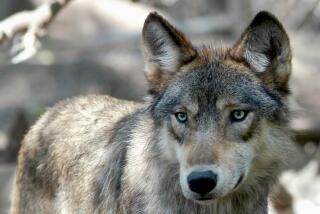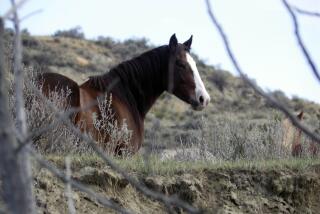Leave Elk Alone, Scientists Advise
WASHINGTON — A National Academy of Sciences report released Tuesday recommends the Interior Department take a “hands-off” approach to managing wildlife and wild lands in Yellowstone National Park--particularly when it comes to grazing elk.
Yellowstone is home to wolves, bison and North America’s largest elk herd. For 80 years, there has been ongoing debate about whether the elk are overgrazing the park’s key plant species, such as willow, sagebrush and aspen.
Some have suggested thinning the elk herd to protect plants, while others want to maintain the size of the elk herd, a prime food source for wolves in the park.
The National Academy of Sciences report has been anticipated as a benchmark in that debate, with implications on whether the National Park Service will alter its management policies.
Ultimately, the report suggests that park managers intervene as little as possible in the park’s ecosystem. It is a policy the park has historically adhered to.
“If the park decides that it needs to intervene to enhance declining species like aspen, the smaller the intervention, the less likely it is to do unintended damage,” the report concludes.
Instead, the report suggests that preying wolves may reduce the size of the elk herd, which may decrease grazing pressure and allow more aspen to survive the grazing elk.
Yellowstone National Park Supt. Suzanne Lewis welcomed the findings, which she said include opinions from the “highest scientific court of the land.”
The report, compiled by the Academy’s National Research Council, came at the order of Congress. It noted that grazing herds, both of elk and of bison, and the impact of that grazing, have been part of Yellowstone’s ecosystem for generations.
More to Read
Sign up for Essential California
The most important California stories and recommendations in your inbox every morning.
You may occasionally receive promotional content from the Los Angeles Times.










